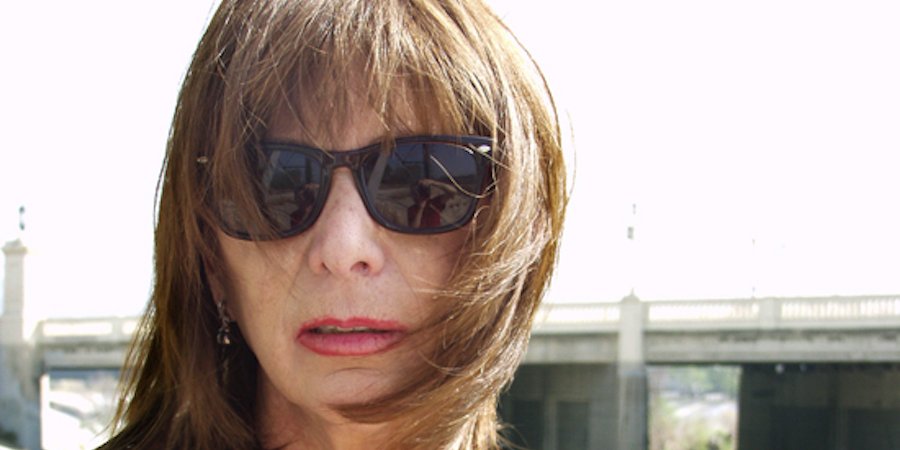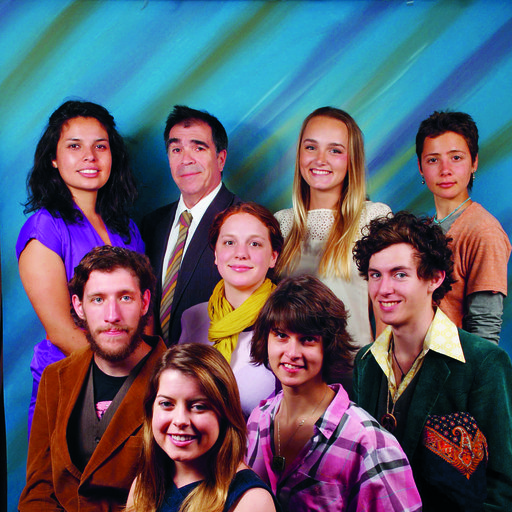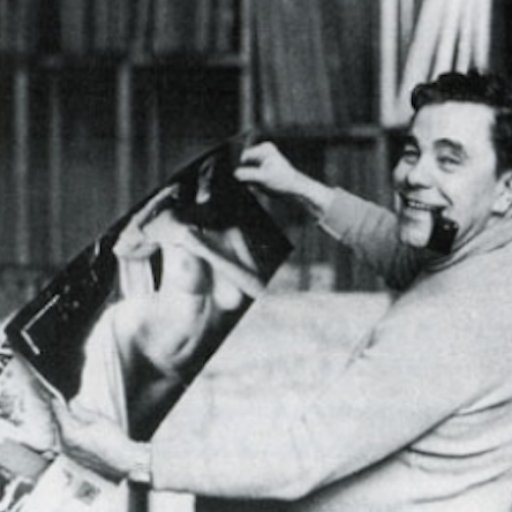An author, critic, and professor of film at the European Graduate School, Chris Kraus has achieved cult celebrity for her experimental novels like Aliens & Anorexia and I Love Dick. The below essay has been excerpted in its entirety from the new book AKADEMIE X: Lessons in Art + Life.
Throughout my twenties I lived in New York and never once thought about applying to art school. Art school, at the time, seemed to be for people who weren't really intending to become artists. I knew all the artists. I even studied with some. But the tuition—sometimes paid for with money, more often intangibly—never passed through an institution. I paid with a loyalty that was often betrayed. But this is normal.
My real education took place in my apartment. Convinced that to be an artist I'd need lots of free time, I did occasional temp work supplemented by low-level scams and some topless dancing. This gave me lots of free time, but at the time, I didn't know what to do with it. Sometimes I slept twelve hours a day. I remember looking in the mirror at my too-rested face and realizing the hardest thing I'd have to learn was how to make my own program, how to inhabit unstructured time without getting lost in it. I don't know if you learn this in grad school.
When, in my late twenties, I began living with a tenured professor at Columbia University, the question of art school, or other graduate school, became tabled. His grad students became my close friends. Before leaving New Zealand, in my late teens I'd unsuccessfully applied to Columbia's graduate program in journalism. In the end, I attended the school by osmosis.
It's only at times when I want to escape from my life that I regret not going to art school.
The bios of writers whose careers I envy usually contain the names of the prestigious MFA programs they attended. If I'd gone to the right MFA program, I'd have an agent! I wouldn't be virtually self-published by Semiotexte, the independent press where I'm a co-editor. My writing would be reviewed in serious, adult publications. But in order for these things to happen, I'd have had to write different writing.
As it is, my writing is read mostly within the art world—a field in which virtually everyone attends an MFA program. And I try not to criticize this. Perhaps for the better, grad school has taken the place of my generation's aimless experience.
I've noticed a trend among students in certain liberal arts undergrad schools to move to New York or Berlin or L.A. after Grinnell or Reed College or Swarthmore. Not applying to grad school or art school is very neo-old school. And this is exciting. What will be even more exciting is if the cultural life of these cities approaches a point where alumni of less elite schools can embrace the same mixture of deep disillusion and confidence.
Art and commerce have always been two sides of the same coin and to oppose them would be false. Instead, I want to talk about a shift that has taken place during the past ten years in how art objects reach the market, how they're defined and how we read them.
The professionalization of art production—congruent with specialization in other postcapitalist industries—has meant that the only art that will ever reach the market now is art that's produced by graduates of art schools. The life of the artist matters very little. What life? The lives of successful younger artists are practically identical. There's very little margin in the contemporary art world for fucking up, accidents, or unforeseen surprises. In the business world, lapses in employment history automatically eliminate middle managers, IT specialists, and lawyers from the fast track. Similarly, the successful artist goes to college after high school, gets an undergraduate degree and then enrolls in a high-profile MFA studio art program. Upon completing this degree, the artist gets a gallery and sets up a studio.
Equal opportunity for white and Asian artists of both genders has ushered in a massive uniformity. It's best, of course, for the artist to be heterosexual and better to be monogamously settled in a couple. This guards against messy leaks of subjectivity that might compromise the work and throw it back into the realm of the ‘abject,' which, as we all supposedly agree, was a 1980s excess that has long since been discredited. If imagery of a sexual subculture is to be deployed, as in the work of Art Center graduate Dean Sameshima, it's important that any undercurrents of desire be cooled off and distanced by conflating homoerotic porn with the consumer-beauty-porn of fashion ads. Through this conflation, the viewer is led into that most desired state of neo-corporate neo-Conceptualism: the empty space of ambiguity, which is completely different from the messy space of contradiction. "Ambiguity," wrote Dutch philosopher Baruch de Spinoza, seeing it all two hundred years ago, "is the kingdom of the night."
The critics Dave Hickey, Jeremy Gilbert-Rolfe, and David Pagel, in their championing of ‘beauty,’ as if it were opposed to ‘criticality,’ are the new police of anti-meaning. During the mid-1990s and beyond, ‘criticality’ (a code word for the unschooled, the race- and gender-conscious, those driven to make art that references conditions in the social world, instead of other art) became the evil empire that lurked outside the Los Angeles art world. All three writers rail against the influence of ‘academe,' with its emphasis on ‘history,’ upon contemporary art production. Since all three are (or have been) themselves employed within the art departments of academic institutions (the University of Nevada, Art Center College of Design, and Claremont College, respectively), I think they're referring, more specifically, to the pernicious hybrid discipline known as ‘cultural studies’ that since the 1970s has used feminism, historiography, queer, and post-colonial theories as lenses through which to view one's own experience of the world.
When collectors pay ten thousand dollars for a David Korty landscape, they aren't purchasing a pleasant watercolor of a night sky wrapped around a hill. Other, more naive artists have done these painting more consistently, and may have even done them ‘better.’ What collectors are acquiring is an attitude, a gesture that Korty manifests through his anachronistic choice of subject matter. The real ‘meaning’ of the work has very little to do with the images depicted in his paintings—night skies wrapped around a hill—or their execution. Rather, the ‘meaning’ (and the value) of the work lies in the fact that Korty, a recent graduate of UCLA's MFA art program, would defiantly loop backwards to tradition by rendering something as anachronistic as a landscape in the quaint medium of watercolor. After all, he has all of art history's image-bank to choose from.
Similarly, when Art Center MA graduate Andy Alexander spray paints the words "Fuck the Police" on the corridor walls of his installation, I Long For The Long Arm Of The Law, the piece is not relegated to the realm of the ‘political.’ ‘Political’ artworks, after all, are "the most hopelessly self-referential of all art forms… Where the work of art as such… exists to manufacture ambiguity, the political one seeks to resolve it." [Jeremy Gilbert-Rolfe, Beyond Piety: Critical Essays on the Visual Art. Cambridge, UK: Cambridge University Press, 1995.] Instead, he is praised in a review by Peter Lunenfeld published in Artext for his "subtle aestheticism," which enacts "a dilation and contraction between psychological and social domains."
Andy Alexander is an intelligent and enthusiastic younger artist. His dad was once the mayor of Beverly Hills. Interviewed by Andrew Hultkrans in the notorious "Surf and Turf" article that proclaimed the dominance of Southern California art schools (Artforum, Summer 1998), Alexander expresses his enthusiasm for art school as a place that "teaches you certain ways of looking at things, a way of being critical about culture that is incredibly imperative, especially right now." Like most young artists in these programs, Alexander maintains a certain optimism about art: that it might be a chance to do something good in the world.
Yet if a black or Chicano artist working outside the institution were to mount an installation featuring the words "Fuck the Police," I think it would be reviewed very differently, if at all. Such an installation would be seen to be mired in the identity politics and didacticism that, in the 1990s, became the scourge of the L.A. art world. Writing in the Los Angeles Times in 1996, critic David Pagel dismissed two decades of work by the black British artist/film-maker Isaac Julien exhibited at the Margot Leavin Gallery as "myopic and opportunistic." "The conservative exhibition," Pagel wrote, "contends that the social group the artist belongs to is more important than the work he makes… Art as self-expression went out in the 1950s." Pagel triumphantly concludes, "even though this show tries to deny it… market research puts people into categories; art only begins when categories start to break down."
Whereas modernism believed that the artist's life held all the magic keys to reading works of art, neo-conceputalism has cooled this off and corporatized it. The artist's own biography doesn't matter much at all. What life? The blanker the better. The life experience of the artist, if channelled into the artwork, can only impede art's neo-corporate, neo-Conceptual purpose. It is the biography of the institution that we want to read.
Reviewing dOCUMENTA (13) in New York magazine, Jerry Saltz coins the term "Post Art" to describe work that "doesn't even see artas separate from living … things that aren'tartworks so much as they are about the drive tomake things that, like art, embed imaginationin material and grasp that creativity is a cosmicforce … A chemist or a general may be making Post Art every day at the office."
Visiting UC San Diego's MFA Fine Art program last year, I observed that 70 percent of the work produced by its students could not be described as painting or sculpture or video or even as installation. Kate Clark, for example, was co-founding Knowledge Commons D.C., an interdisciplinary free school in Washington, and custom-making piñatas in San Diego. She'd developed the ‘business’ through posters and blogs. "I use the word 'business' in quotation marks," she emailed me later, "because I consider [it] to be more about a trade than a creative practice." Danny Cannizzaro was writing a novel that he plans to self-publish as an e-book. Iranian-born Elmira Mohebali was studying ancient Akkadian in order to translate Gilgamesh. Tomas Moreno was compiling an archive of his father's work in the Chicano community of the 1970s, and DJing club nights at several L.A. Central American venues. Gary Garray was working on music. Trained as an architect, Lebanon-born Rayyane Tabet was preparing an ambitious project tracing the forgotten history of the Trans-Arabian pipeline. He has since returned to Beirut to complete and exhibit the project.
Jerry Saltz on "Post Art": "It's an idea I love… Things that couldn't be fitted into old categories embody powerfully creative forms, capable of carrying meaning and change." But what meaning? What change? One of art criticism's great limitations is its inability to look beyond its own context and language. Why would young people enter a studio art program to become teachers and translators, novelists, archivists, and small business owners? Clearly, it's because these activities have become so degraded and negligible within the culture that the only chance for them to appear is within contemporary art's coded yet infinitely malleable discourse.
As the loose network of underground cinemas and film/video workshops established during the 1960s atrophied during the 1990s, documentary and non-narrative film-making migrated into the art world. Films and videotapes that formerly would have been produced and exhibited on the underground film circuit came to be redefined as part of an ‘artistic practice.’ William E. Jones, Laura Parnes, Andrea Bowers, the Bernadette Corporation, Sung Hwan Kim, and countless others produce films that demand continuous viewing but can only be seen in museums and galleries, augmented by saleable photographs, drawings or objects. Viewed and discussed more in the context of these artist's careers than through their meaning and content, the visibility of these films has been gained at the cost of their volatility.
Likewise, as the genre of ‘literary fiction’ contracts to describe only well-crafted, accessible stories, the writings of Josef Strau, Moyra Davey, Mark Von Schlegell, and countless others have come to exist not as books but as installation components and art-catalogue writing. For example, Oulipo member Harry Matthews, arguably one of the most important American poets of his generation, discusses his work with Bernadette Corporation member Jim Fletcher in artist Nik Gambaroff's most recent catalogue.
When artists Amy Lien and Enzo Camacho (based in New York and Manila, respectively) wanted to study the growing subculture of the ‘call-center crowd’ in Camacho's native Manila, they created an art installation. As Lien explained in an email:
"These call centers have developed into 'communication mills’ that extend Filipino service cachet (friendliness, politeness, good English skills, social familiarity with American pop culture) into virtual assets. Generally young, earning a relatively very decent living, the call center workers storm clubs and bars during late nights and weekends and are known for their wild and sexually promiscuous behavior. Rumours abound. Because of the demand on many employees to work long shifts during unconventional hours (designed to accommodate American time zones) many of the call centers have sleeping rooms built into them, which are believed to be sites for cruising and scandal. We imagined this knowledge transference, this indoctrination of cultural difference via strange mantras delivered during call center training workshops ('there's America and there's the rest of the world,' 'Americans value fact over feeling,' etc.) The U.S. is something of a dream, pervasively present in every living moment in Manila due to the country's colonial history with the U.S. and the continuing soft-colonial management of its political and economic policies."
Perversely, as I write this, Journatic, a Philippines-based agency that supplies outsourced "local content" to U.S. newspapers, has been exposed for its use of fake bylines. In L.A., the staff of a leading business espionage bureau includes former investigative reporters and Pulitzer prize-winning war correspondents. Is it any surprise that Camacho and Lien would choose to transmute their research into visual metaphor, photographs and installations that can be shown in a gallery? There is a tremendousdesire to know the world … a desire that seems greater to me than the involvement with visual art's intrinsically formalist questions. As Lien emailed me, "I feel like I really need this engagement with the Philippines in order to avoid total cynicism while living and working in New York." Market-driven though it might be, contemporary art offers a context for work that might once have been done within humanist disciplines now on the verge of becoming as extinct as ancient Akkadian.
ASSIGNED READING, VIEWING AND DRINKING
READING:
– Certainty of Hopelessness. 2013.
www.certaintyofhopelessness.com.
Accessed 6 June 2014
– Chris Glazek’s and Sean Monahan’s brilliant and devastating pamphlet about student debt (think twice before you assume it).
VIEWING:
– Novaczek, Ruth, dir. The New World. 2013. Film
London-based artist and film-maker Ruth Novaczek’s painful and sweet half-hour film evokes the twentieth century as an emotional universe. Warning: contains cigarette smoking.
– Olmi, Ermanno, dir. Il Posto. Titanus, 1961. Film
Ermanno Olmi’s beautiful, implacably realist and poetic narrative documentary about the death of the countryside and young people who, after high school, do not attend art school but seek employment.
– Ruiz, Bernardo, dir. Reportero. Quiet Pictures, 2012. Film
Bernardo Ruiz’s chilling documentary about the Mexicali-based reporter Sergio Haro, and his heroic work reporting on political corruption and the narco-wars for the Tijuana newsweekly, Zeta.
DRINKING:
– Beer by Butcher’s Tears.
http://butchers-tears.com
Butcher’s Tears, an artist-run but wholly professional brewery, is interesting both for the artisanal quality of its beer and its entrepreneurial nature. Butcher's Tears was founded by recent art-school graduate Felicia von Zweigbruck, who also runs Lost Property, a West Amsterdam alternative gallery.



























